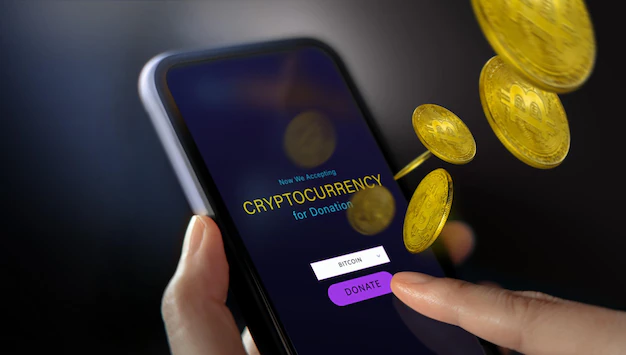How Do I Open A Multi-Currency Account?
by Abdul Aziz Mondal Finance Published on: 14 December 2023 Last Updated on: 02 September 2024

We live in times where international transactions have become a standard in our everyday lives. Not just businesses but also regular people are making payments in foreign countries.
Thanks to digitalization, you can now purchase items from the other part of the world and pay with your home currency. Also, businesses are dealing with many more foreign transactions than ever before due to the advancements in technology.
So, if you pay with your local currency, how does the business receive that money? Or if you expect to get paid from a different country, how can you manage your funds?
Well, the solution is quite simple. You’ll need a multi-currency account.
What is a Multi-Currency Account?
It’s simple. A multi-currency account is a bank account with the ability to hold different currencies.
A multi-currency account comes with a beneficiary and account number, obviously, but also a SWIFT code. This allows both people and businesses to manage different currencies on the same account.
To avoid some of the popular offshore banking destinations, consider it as having a single account with subaccounts in various currencies.
In other words, you can send and receive money in other currencies without having to create several accounts or consider a foreign bank. A single account number can facilitate most cross-border transactions.
Banks and other financial organizations often provide multi-currency accounts, which may be utilized for both personal and business uses.
But why open a multi-currency account?
Well, it comes with many advantages, like lower transaction costs, easier management, and favorable exchange rates.
Just as the name suggests, a multi-currency account can hold multiple currencies.
Banks often offer (but are not limited to):
- United States Dollar (USD)
- Euro (EUR)
- Canadian dollar (CAD)
- Australia Dollar (AUD)
- Dollar Hong Kong (HKD)
- Pound sterling (GBP)
- Dollar Singapore (SGD)
- Yen (JAPAN)
Users can avoid the costs and fees related to converting currencies through a bank or foreign exchange provider by using this type of account. On top of that, users can transact in many currencies at a better exchange rate.
However, exchanging currencies is not the only reason businesses and people open multi-currency accounts. These types of accounts are great for managing your finances.
How Do Multiple Currency Accounts Work?
Multi-currency accounts are quite versatile, but the function is no different than a regular bank account.
Each multi-currency account has three characteristics:
- You can receive multiple currencies (offered by the bank)
- You can hold those currencies
- You can pay in different currencies
This is why international transactions are more efficient through a multi-currency account.
Receiving payments in foreign currencies gives you the option to convert the money to your chosen currency.
A variety of multi-currency account types could come with extra capabilities to simplify money management further.
For example, you can open a multi-currency account on genome.eu and enjoy perks like instant money transfers, a corporate Genome card, team account management, and a referral program.
Who Is Eligible for a Multi-Currency Account?
There are no special requirements for opening a multi-currency account. If you are eligible for a regular account, there is a good chance you’ll also be able to open a multi-currency account.
Eligibility requirements often include things like age, place of residence, and income source. A permanent address in a certain country, evidence of income or wealth, and being older than eighteen are only a few requirements that various banks may impose on applicants.
Furthermore, certain multi-currency accounts could target certain clientele, such as companies or regular travelers. Additional eligibility restrictions, such as minimum balance requirements, transaction volume limitations, or company registration paperwork, may be applicable in these kinds of situations.

How to Open a Multi-Currency Account?
Most people are scared of multi-currency accounts, thinking that the process is rather complicated. However, that is not the case.
When it comes to opening a multi-currency account, the process is not much different than a regular bank account. In fact, some banks offer the ability to convert your regular single-currency account into a multi-currency account.
So, you’ll be required to submit paperwork and identification just like a regular bank account.
Things you need when opening a multi-currency account:
- Personal Information, such as your complete name, birthdate, address, phone number, and Social Security number.
- Proof of identity documents, such as a driver’s license, work permit, passport, or business certificate issued by the government;
- Regular bank account or credit/debit card from the bank
Of course, this depends on the bank, and some banks might request additional documents or have different multi-currency account options.
Some banks allow you to open a multi-currency account online with a few easy steps, while others require a visit to the bank.
Additionally, some banks require you to make an initial deposit, while others can open an account without depositing money.
Advantages and Disadvantages of Multi-Currency Accounts
Just like anything in the world of finances, even the multi-currency account has pros and cons.
Pros:
- Manage various currencies in a single account, allowing better international payment tracking.
- Multiple local account details, such as the bank code, branch code, or account number
- Lower exchange rate risk: Favorable exchange rates may apply when using multi-currency accounts.
- Potential cost savings: Compared to regular bank accounts, multi-currency accounts may have reduced fees for foreign exchange transactions.
- Better tracking: You can track international payments easily.
- Depending on where you create the account, you could be eligible for additional coverage, such as FDIC insurance, to safeguard your funds.
Cons:
- The minimum account balance required by certain multi-currency account providers might be as high as $200,000.
- Because it’s not a standard account, maintenance costs might be substantial and may even incur yearly expenses.
- Variations in currency rates: Banks provide favorable exchange rates but are subject to sudden changes.
- Limited options: Multicurrency accounts often do not allow for investing.
Should You Open a Multi-Currency Account?
If you want to make payments or receive money in a foreign currency, then a multi-currency account is the right way to go.
Companies who trade on the global market, operate eCommerce sites or have international offices should consider some of the top international banks for overseas business.
Furthermore, these accounts are excellent for independent contractors and freelancers. So, if you’re a freelancer and get paid in many currencies, you want to think about creating one.
Read Also:



































































































